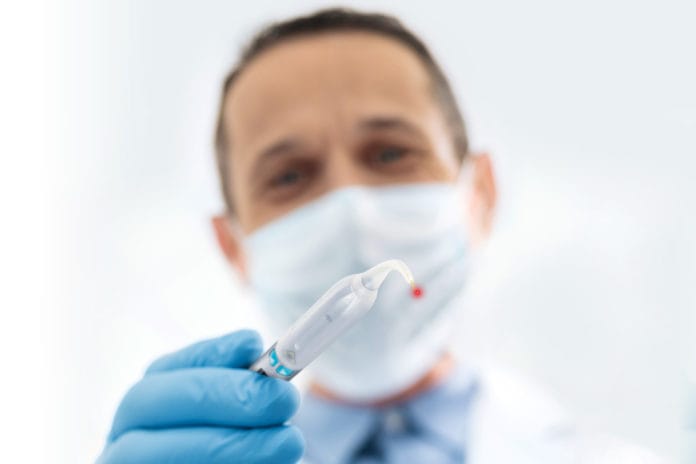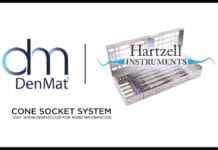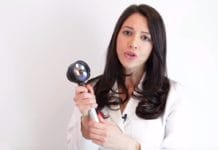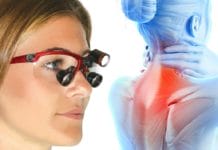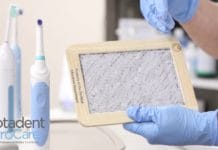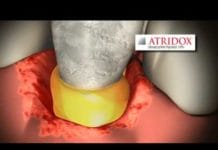Test Your Dental Laser Knowledge!
Disclosure: This quiz is sponsored content from DenMat as part of our sponsored partner program.
Let's test your dental laser knowledge!
Many risk factors influence periodontitis including patient age, hormonal changes, immune system disorders, and systemic diseases. Laser therapy can be used in place of scaling and root planing when treating periodontitis.
There are many factors that affect the start, progression, and prognosis of periodontitis. Some of these factors are age, sex, hormonal changes, immune system disorders, systemic diseases, diabetes, stress, and cigarette smoking. The use of laser therapy as an adjunct to scaling and root planing has been proven to significantly improve and facilitate healing, including improvements in attachment gain and reduction in pocket depths.
Crispino A, Figliuzzi MM, Iovane C, et al. Effectiveness of a diode laser in addition to non-surgical periodontal therapy: study of intervention. Ann Stomatol (Roma). 2015;6(1):15-20. Published 2015 May 18.
What is the typical wavelength for a diode laser?
Although there are many different lasers used in dentistry, a diode laser typically has a wavelength of 810-980 Nm. Other types of lasers include a CO2 laser which has a wavelength of 9600-10600 Nm, Er:Yag which has a wavelength of 2940 Nm, Nd:YAG which has a wavelength of 1064 Nm, and a Ktp laser which has a wavelength of 532 Nm. Typically, a diode laser has an easier learning curve for the user as well as a more affordable purchase price when compared to other types.
Crispino A, Figliuzzi MM, Iovane C, et al. Effectiveness of a diode laser in addition to non-surgical periodontal therapy: study of intervention. Ann Stomatol (Roma). 2015;6(1):15-20. Published 2015 May 18.
Which of the following is false regarding the use of laser therapy for the treatment of periodontal diseases?
“Lasers produce light energy that can be absorbed by a target tissue. The absorption process produces a thermal reaction in that tissue. Depending on the instrument’s parameters and the optical properties of the tissue, the temperature will rise, and various effects will occur. The results can be useful in the treatment of periodontal disease. In general, most non-sporulating bacteria, including anaerobes, are readily activated at temperatures of 50 degrees C. The inflammatory soft tissue present in periodontal disease can be removed with a temperature of 60 degrees C; moreover, hemostasis can also be achieved within the same heat parameters. Laser excisional or incisional surgery is accomplished at 100 degrees C, where vaporization of intra- and extracellular water causes ablation, or removal of biological tissue. This is the temperature at which calculus could be removed from the root surface.”
Coluzzi, Donald J. Lasers for Phase One Periodontal Therapy. Accessed February 18, 2019. www.laserdentistry.org/uploads/files/dentalregulation/Lasers_for_Phase_One_Periodontal_Therapy_with_Photos.pdf
In a 2015 study evaluating the effectiveness of a diode laser as an adjunct to scaling and root planing (SRP) in patients affected by periodontitis, therapy containing both SRP and laser treatment was proven to be more effective than SRP alone.
Irradiation of periodontal pockets with a laser can be routinely associated with scaling and root planing when treating patients presenting with periodontitis. In 2015, a study was completed comparing 68 adults with moderate-to-severe periodontitis. The patients were randomly divided into two groups: the first of which received SRP alone; the second group received laser treatment in addition to SRP. Results were measured by gingival index, plaque index, and probing depths. Both procedures were effective, but therapy involving the diode laser was associated with more effective results.
Crispino A, Figliuzzi MM, Iovane C, et al. Effectiveness of a diode laser in addition to non-surgical periodontal therapy: study of intervention. Ann Stomatol (Roma). 2015;6(1):15-20. Published 2015 May 18.
According to the CDC, how many Americans aged 30 years or older are affected by periodontitis?
According to the Centers for Disease Control and Prevention (CDC) half of Americans aged 30 years or older have periodontitis. This equals approximately 64.7 million Americans.1 According to a study published in the Journal of Dental Research, in 2009-2010, of this total, 9% of adults were categorized as having mild periodontitis, 30% had moderate, and 8% had severe periodontitis.2
1. Periodontal Disease Fact Sheet. American Academy of Periodontology. https://www.perio.org/newsroom/periodontal-disease-fact-sheet
2. Eke PI, Dye BA, Wei L, Thornton-Evans GO, Genco RJ. On behalf of the participating members of the CDC Periodontal Disease Surveillance workgroup: James Beck, Gordon Douglass, Roy Page. Prevalence of Periodontitis in Adults in the United States: 2009 and 2010. J Dent Res. 2012 Oct;91(10):914–920.

